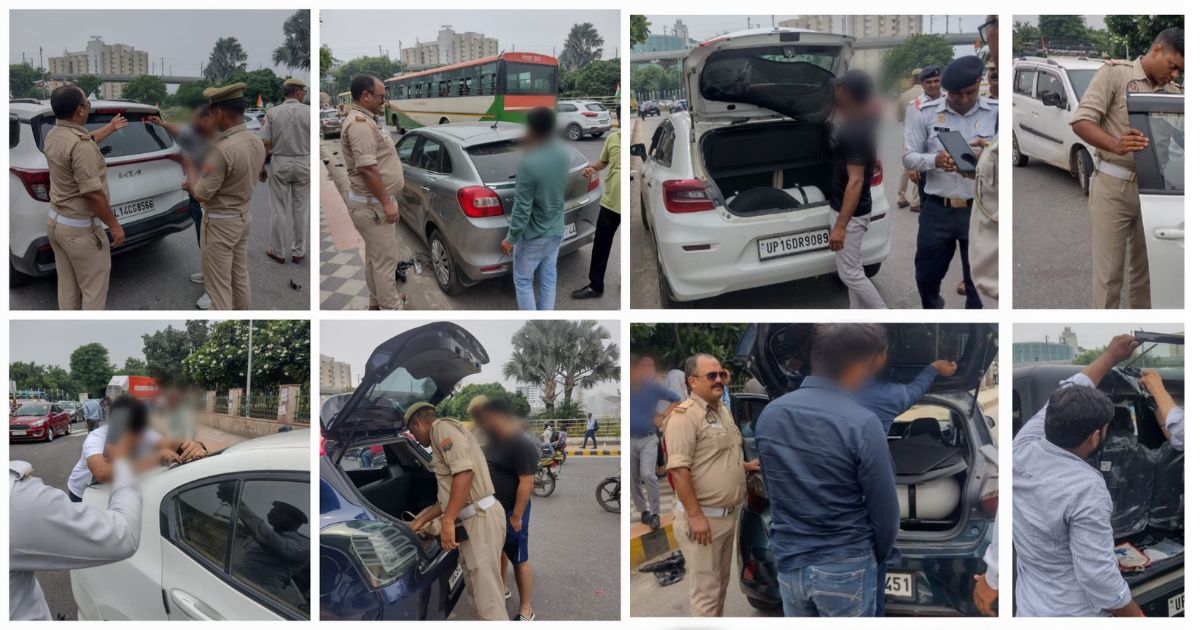Days after Uttar Pradesh Chief Minister Yogi Adityanath ordered officials to take action against vehicles displaying caste or religion-based stickers, a new traffic rule has sparked a heated debate in the state. The rule, which came into effect on August 20, 2023, allows traffic police to issue challans (traffic fines) if vehicles are found displaying caste and religious identifiers, leading to over 2,300 challans being issued in Noida and Ghaziabad.
Under the new regulation, vehicles adorned with words or symbols related to caste identities like “Kshatriya,” “Yadav,” “Gurjar,” “Jat,” “Brahmin,” and others, as well as religious identifiers, are subject to penalties. The enforcement drive, lasting for 10 days, targeted vehicles displaying stickers such as “Jat,” “Hindu,” “Tyagi,” “Yadav,” “Thakur,” “786,” and similar markers, considering them an offense under Section 179(1) of the Motor Vehicles (MV) Act.
“Over the past 10 days, we have collectively issued a total of 1,542 challans to vehicles displaying inscriptions related to caste, religion, and other inappropriate content. Our response doesn’t conclude with this specific campaign; we will continue to issue challans whenever we encounter such markings on vehicles,” stated Ramanand Kushwaha, Additional Deputy Commissioner of Police (Traffic) in Ghaziabad.
“A fine of Rs 1,000 is imposed for the display of caste or religion-based text or symbols on a vehicle. If such markings are found on the number plate, the penalty escalates to Rs 5,000. As per the stipulations of the Motor Vehicle Act, any content other than the vehicle number is considered illegal on the number plate,” elucidated Anil Kumar Yadav, Deputy Commissioner of Police (Traffic) for Gautam Budh Nagar.
While proponents of the rule commend the authorities for their proactive approach, critics continue to voice their reservations. The large number of challans issued in such a short period has ignited conversations about the scope and potential consequences of this regulation. Questions persist about the challenges of differentiating between genuine religious or cultural expressions and those made with the intention of inciting divisions.
The controversy over this new traffic rule highlights the complex interplay between cultural norms, freedom of expression, and government intervention. As debates continue to unfold both within Uttar Pradesh and across the country, the future of this regulation remains uncertain, and its broader implications for Indian society and democracy are being hotly debated.


